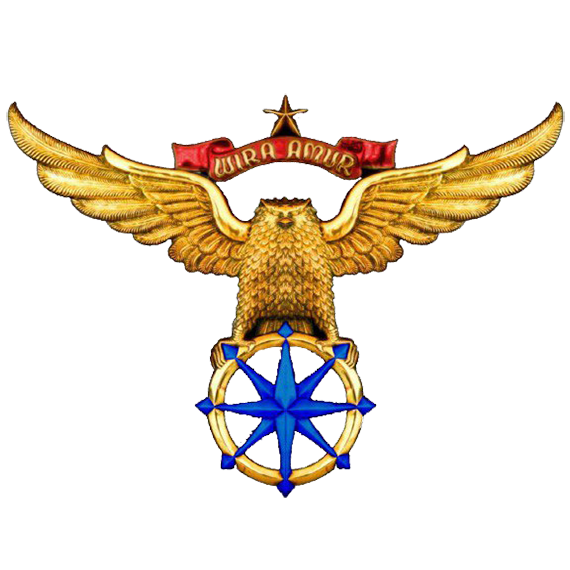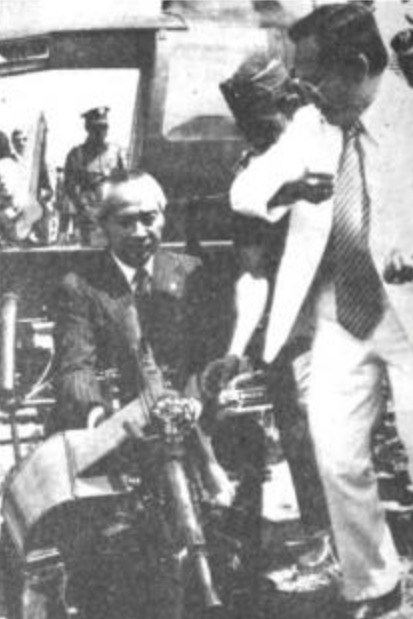- Yes
- no

IPTN’s NBo 105 CB
Hello everyone! Today I would like to suggest an Indonesian produced variant of the MBB Bo-105, namely the NBO 105CB. This helicopter was produced under license from Messerschmitt-Bölkow-Blohm (MBB) in the 70s. Its armament includes FFAR rockets, 80mm SURA-D rockets as well as some gunpods, notably this helicopter does not carry ATGMS, so it’s purely for close-in rocket attacks or gun runs.
Since it has no ATGM, in game this would be a reserve tier/starter helicopter at a battle rating of ~7.7-8.0, with a similar armament to the early Huey/Huey Cobra but with the maneuverability and size of the Bo 105s suitable for close-in gun/rocket runs.
A. Background
Details



B. Specifications
Details
General Specifications
- Weight (max) : 2000 kg (2500kg)
- Length : 11,86 m
- Width : 9,84 m
- Height : 3 m
- Crew : 2
- Engine: 2x 420-shp Allison 250-C20B turboshaft
- Max Speed (Cruise) : 242 km/h (205km/h)
- Service Ceiling : 3000m
- Added bulletproof steel armoring under the crew+passenger (significantly add weight but can be removed if necessary)
Armament
2x 70mm FFAR rocket pods (7-tube / 12-tube pods)
- FZ-21 (Anti-personnel), FZ-58 (Anti-Tank)
16-24x 80mm SURA-D rockets (3-4 per launcher, 3 launcher each side)
- HEFrag (Impact Fuze), HEFrag (Proximity Fuze), HEAT
2x twin 7.62mm FN MAG 60.30 machine gun pods
2x 12.7mm FN M3P machine gunpods
80mm SURA-D specifications
Propellant : Solid Rocket Fuel
Max Speed : 700 m/s
Effective Firing Distance: 1500 m (HEAT)
Maximum Firing Range: 8000 m
Weight : 11 - 12 kg per unit
Length : 600 - 1.055 mm
Fin Type : Fixed Fin
Penetration : 13 inch of armor
Gunpods
Twin 7.62mm Gunpods
HMP250 12.7mm Gunpod
C. More Images
Details
Camouflage
Cockpit of the Military version
ABRI Combined Exercise 1995
NBO 105 carrying 7-tube FFAR rocket pods
80mm SURA-D mounted
Unarmed Version
D. Sources
Details
- Bolkow 105 Information Display, Indonesian Army Aviation Center’s defense equipment exhibition, 2024
- Worldwide Equipment Guide – Volume 2: Airspace and Air Defense Systems, United States Army Training and Doctrine Command. December 2011. p. 2-2
- Amir, S. (2012). The Technological State in Indonesia: The Co-constitution of High Technology and Authoritarian Politics (1st ed.). Routledge.
- The Story Behind the NBO-105 Helicopter | Historia.id
- Flightglobal’s 2024 World Air Forces
- Oerlikon Rocket (SURA-D) – Used on the NBO-105 Puspenerbad Helicopter | Indomiliter
- NBO-105: Once the Main Attack Helicopter of the Indonesian Army | Indomiliter
- 56 Years Ago Today, The BO-105 First Flight | Indomiliter
- AIRPLANE SCALE MODELKIT: NURTANIO Bolkow NBO-105
- MBB Bo 105 - Wikipedia
Image Sources
- Aircraft Photo of HS-7065 | MBB BO-105CB | Indonesia - Army | AirHistory.net #330544
- Priyono Bitles Combat | Facebook
- DEFENSE STUDIES: Peluncur Roket pada Heli BO-105 TNI AD
- FN HMP250 - Senjata Pamungkas Heli Serbu NBO-105 Puspenerbad
- Redirecting...
- https://www.youtube.com/watch?v=SOYAGfzCrdA
- https://www.youtube.com/watch?v=K4o5ML1xd7k
- 7 Potret B.J. Habibie Saat Muda yang Mungkin Belum Kamu Ketahui - KapanLagi.com
Any suggestions or corrections would be highly appreciated!Additionally, you can check out more Indonesian suggestions below!



































